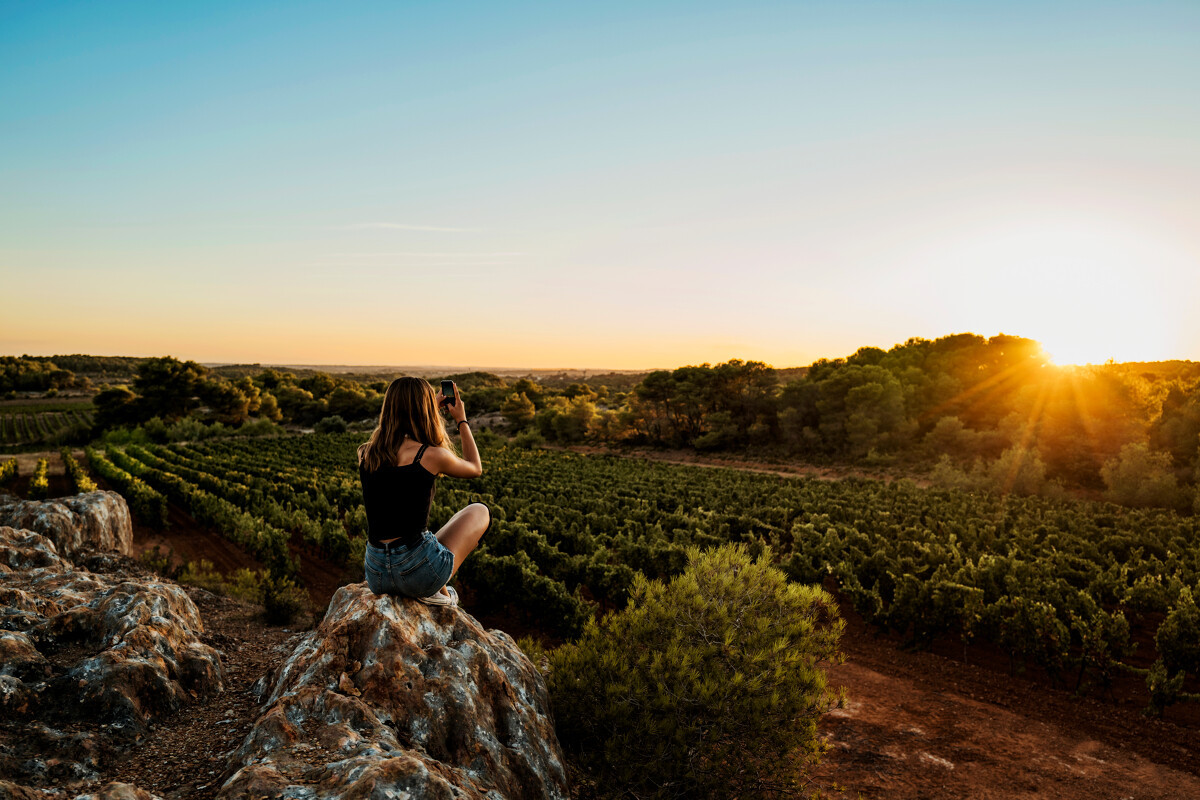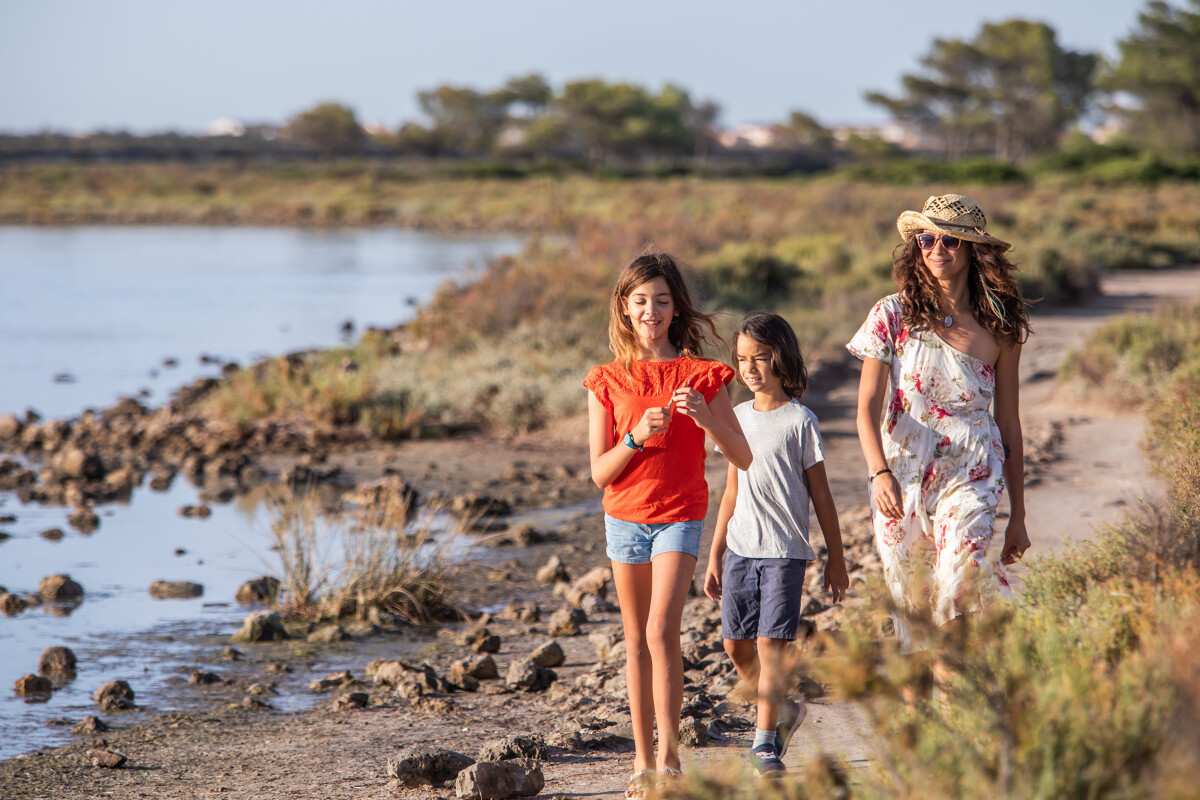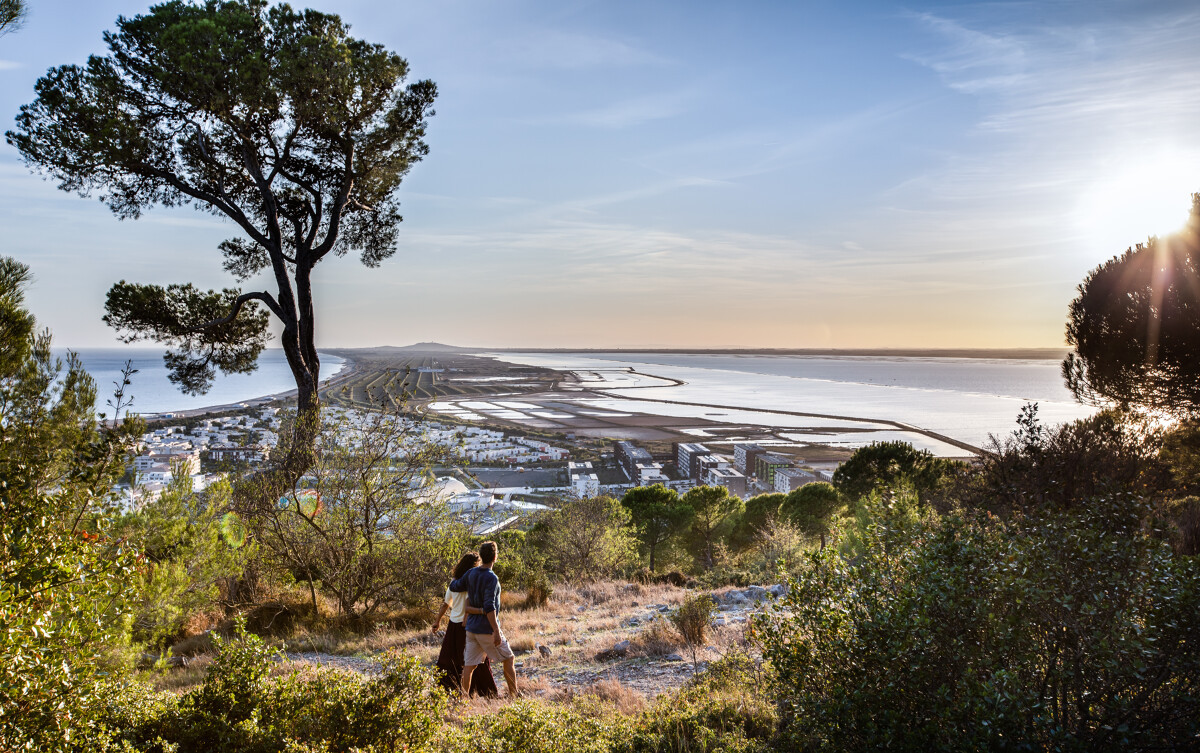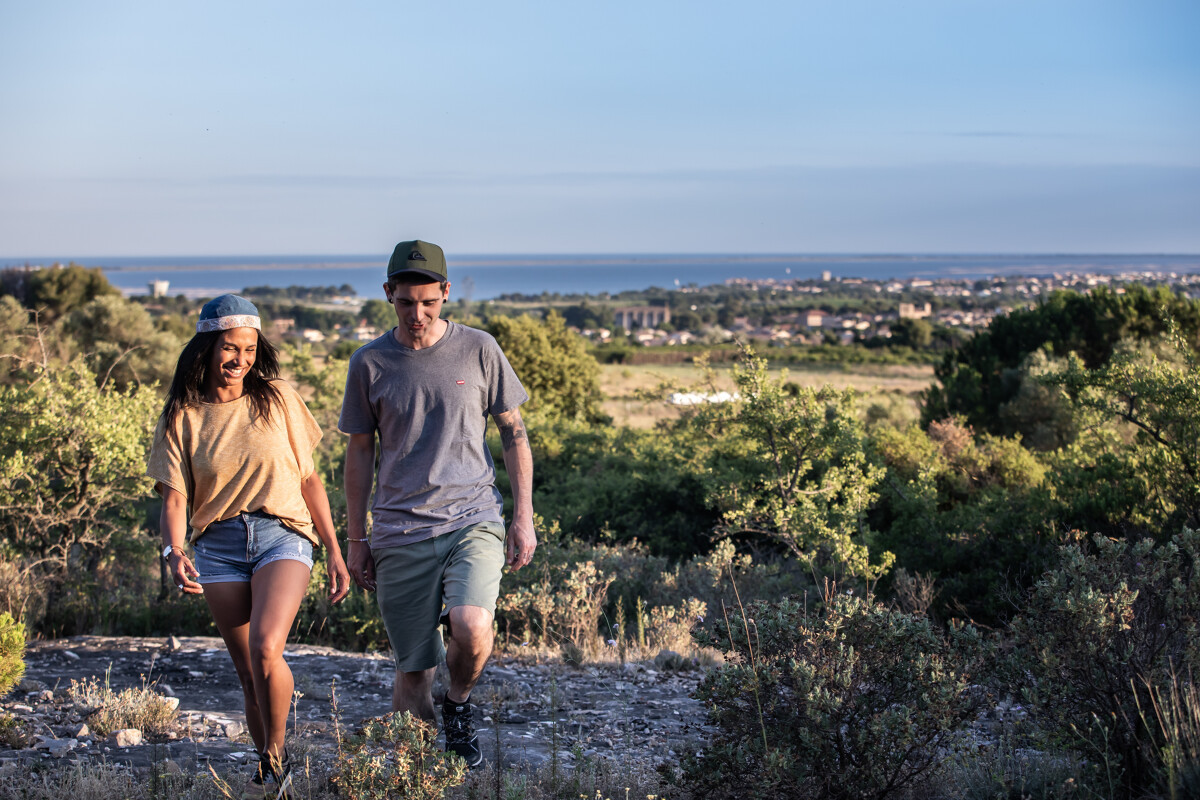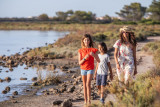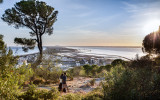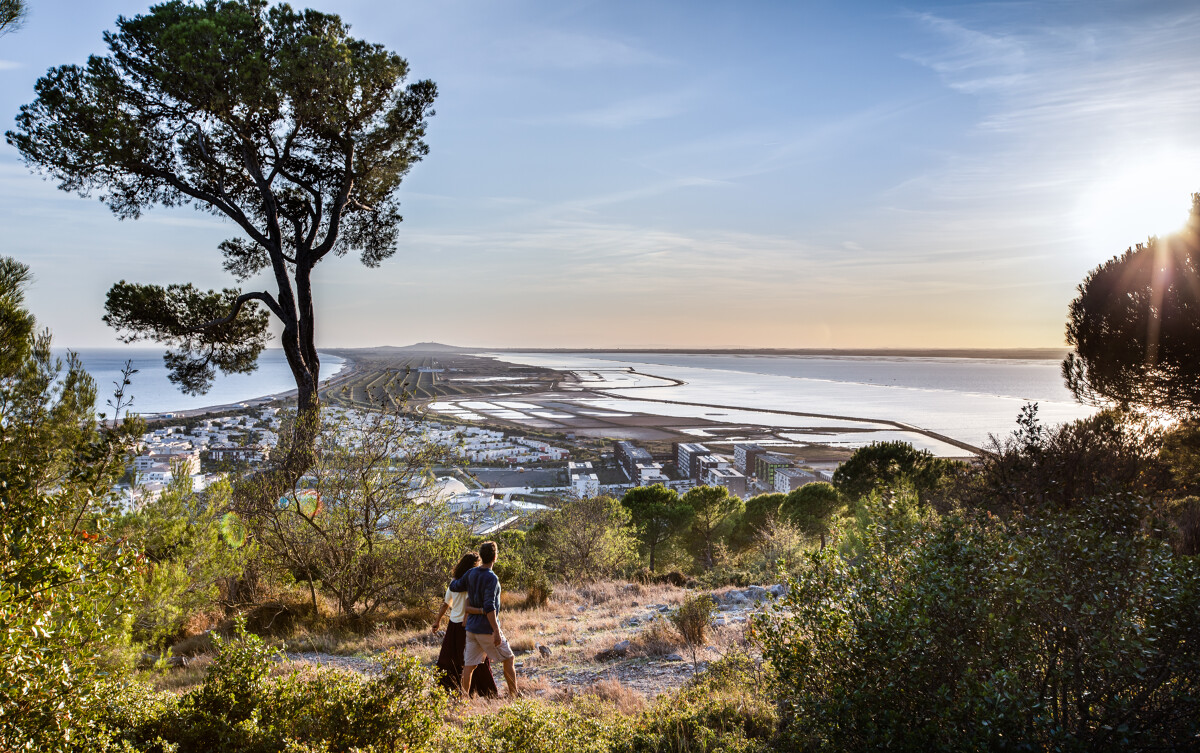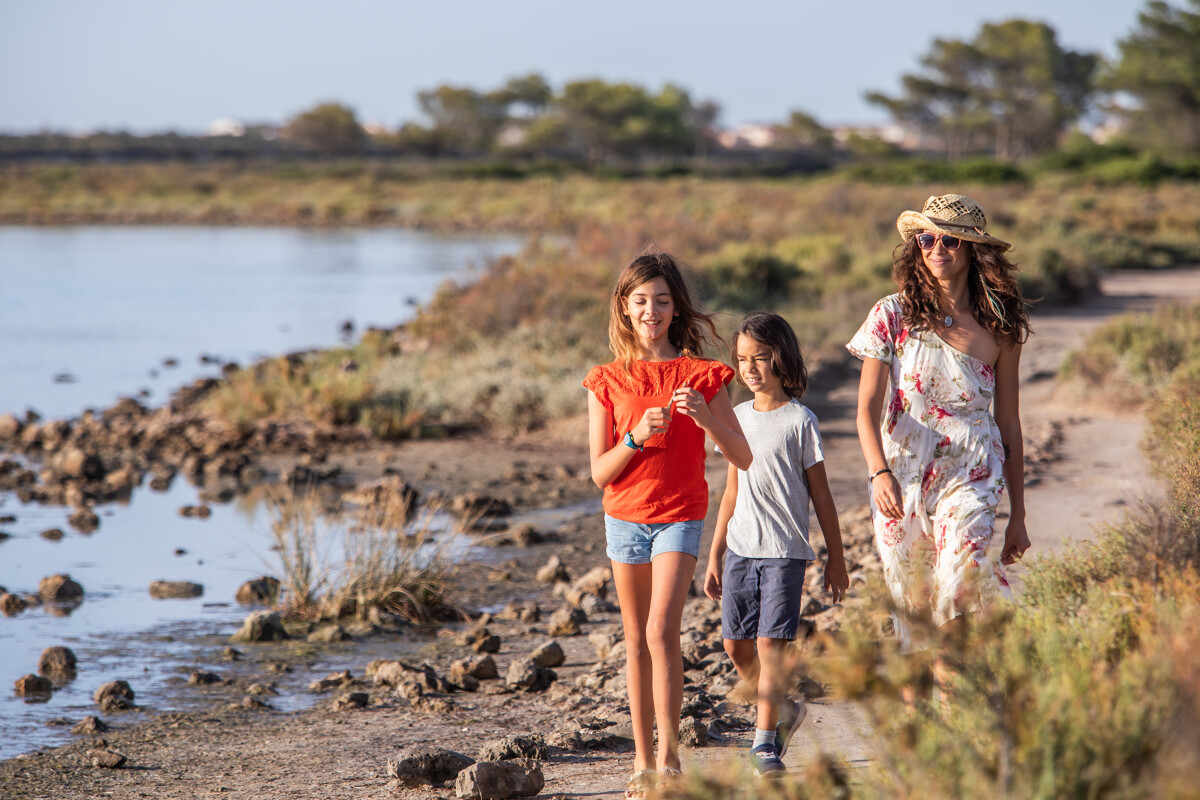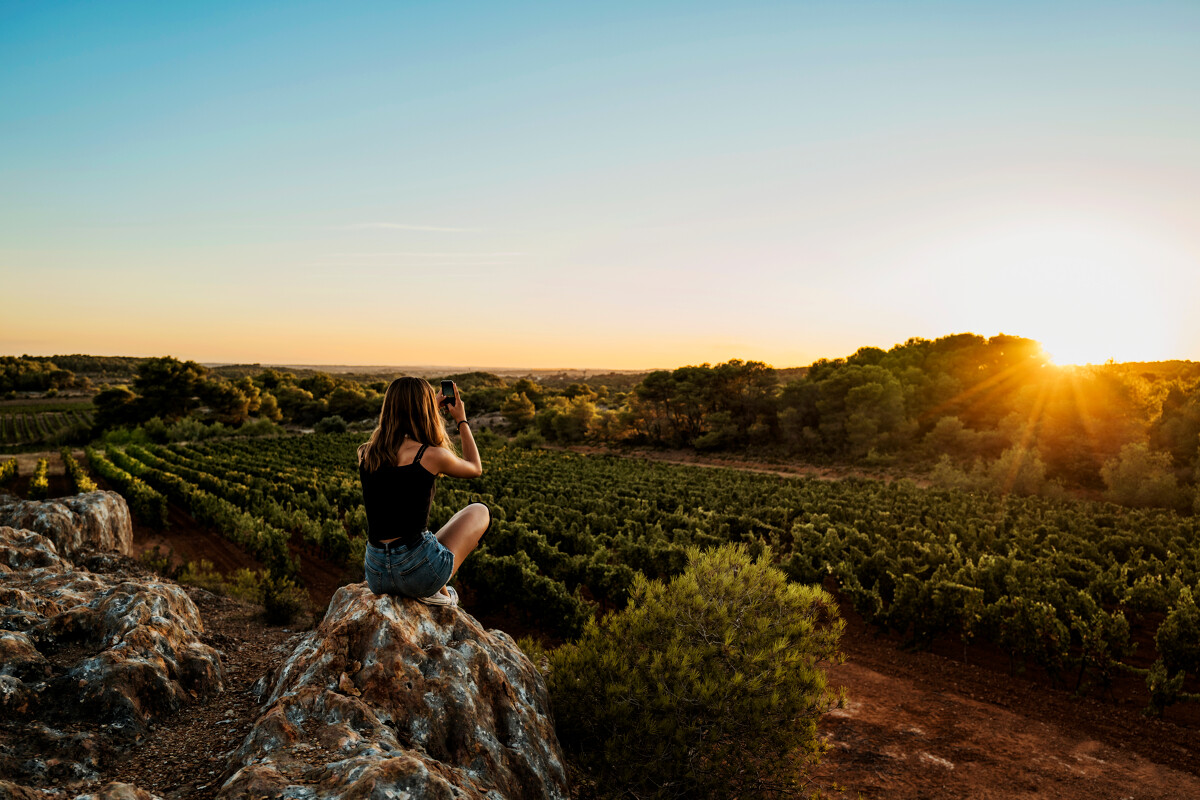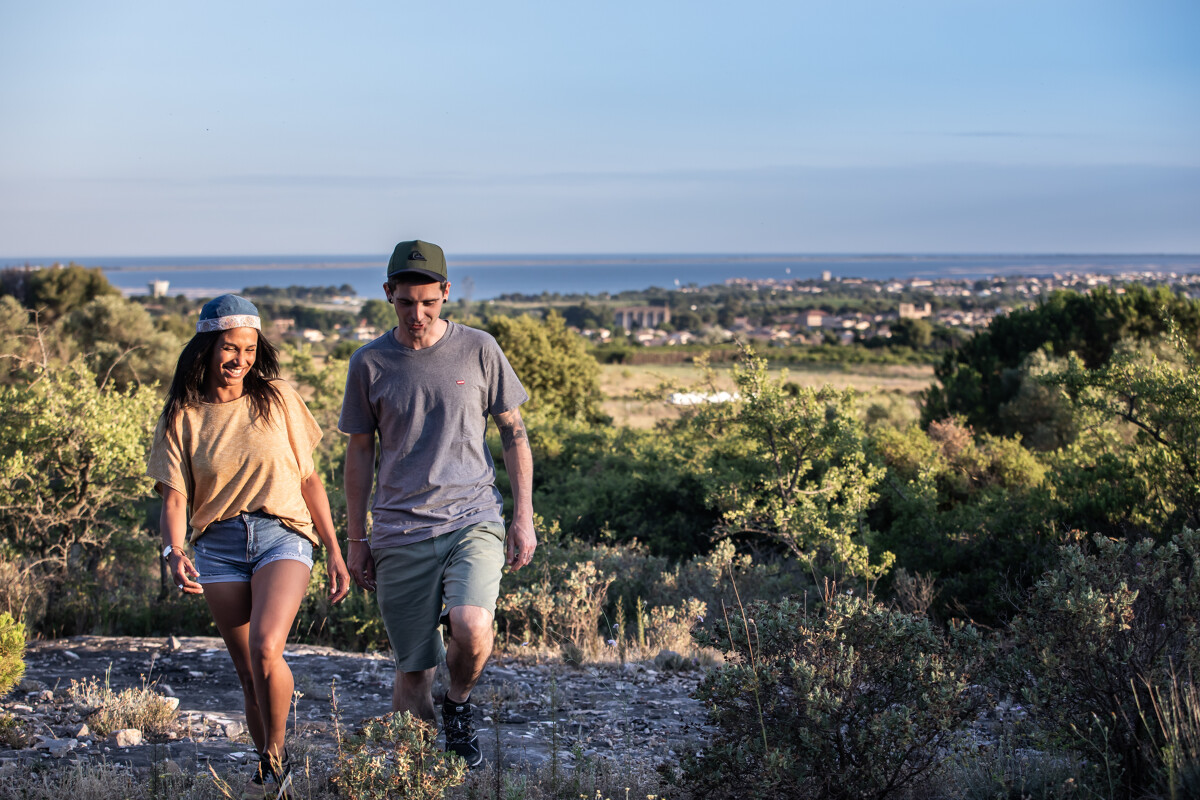The natural areas of the Thau Archipelago
Between the sky and the water, protected treasures
By Julia Laffaille
A veritable patchwork of landscapes, the Thau Archipelago, nestled between the Mediterranean and the wide open spaces of the garrigue, is a small preserved paradise. This territory has always been a promise of travel and of a still wild nature just a stone's throw from the beautiful Occitan villages. So, I went back to explore these sunny landscapes to discover all these protected natural treasures.
By the sea, a stone's throw from the blue waves
Here, the inhabitants live alongside this idyllic setting on a daily basis and water is certainly a character in its own right. Lagoons, ponds or even salt pans are all environments that have shaped the landscapes in which Man has been able to develop numerous activities such as fishing, wine-growing, salt farming or even shellfish farming. But before the tasting, we let ourselves be carried along the paths laid out in the heart of these amphibious spaces.
From the heights of Mont Saint-Clair in Sète, the lido, an infinite tongue of sand stretches out at our feet, between the sea and the Thau lagoon. A greenway runs along this beach for over 12 km, perfect for walking or cycling to Marseillan!
In the old salt marshes, many birds have taken up residence, such as terns, egrets, herons and even pink flamingos recently. Pay attention to the surroundings, you will surely notice some vineyards with their feet in the sand. It is on this legendary coastline that the famous Listel is produced, the sandy rosé that is emblematic of the Languedoc region. And on the other side of these endless beaches, the Thau lagoon is home to a large shellfish farm on the famous shellfish tables, recognisable from afar.
Near Marseillan, the Bagnas nature reserve is classified as a Natura 2000 site. A wetland of around 600 hectares, it is a real green lung which hosts a biodiversity of environments that can be explored during public events throughout the year. 200 species of birds share the landscape alongside 16 species of reptiles, 9 species of amphibians, 30 species of mammals, 25 species of fish and 418 species of insects. Enough to spend a busy day trying to spot these rather discreet inhabitants from the surrounding paths.
The Frontignan salt marshes also offer remarkable aquatic and salty environments full of surprises. Starting from the Bois des Aresquiers in Vic-la-Gardiole, the magnificent hike "Les Aresquiers" (9km / 3h), offers hikers and mountain bikers the opportunity to explore these special settings formerly exploited by man. We are here between land and sea.
There are the salt pans, of course, but also the string of ponds (Vic, Pierre Blanche, Ingril) classified as a Nature 2000 zone. It is thus in the middle of these flooded lands that we walk, astonished by this so particular nature which surrounds us. The water is often only a thin layer in which long-legged birds come to wade to fish for their meal. The path winds over thin strips of land inhabited by reeds or pampas grass that dance lightly in the sea breeze. As we pass, the herons take flight. A few wooden footbridges allow us to straddle the incredible fauna of these marshes without damaging it. The sansouires, or "salt meadows", unveil their salicornia, saladelles ("sea lavender") and other vernacular plants growing on these salty wetlands which crackle nicely on hot days. On the way back, the majestic pines of the Aresquiers wood offer a pleasant shade and a delicious smell of resin.
In the heart of the limestone lands
On the other side of this infinite expanse of water, when you go further inland, a completely different scene emerges. The sand gives way to drier soil and the vegetation becomes denser. The garrigue settles in widely and proudly. Clumps of oak, juniper and olive trees create wonderful shades of green. Characterised by a limestone soil, unlike the maquis which takes root on siliceous soil, the garrigue is a plant formation recognisable among all others which instantly reminds us that we are under the Occitan sun.
The hills of La Moure and the Causse d'Aumelas, classified as a Nature 2000 zone, represent one of the largest areas of uninterrupted garrigue. The vast plateaus can be explored along a short hiking trail starting from Montbazin (11.5 km / 3h). Although it appears to be a desert and arid, this site reveals an incredible wealth of flora and fauna if you take the time to linger there. Kite, Montpellier harrier, critically endangered ortolan bunting, ocellated lizard, cottony rockrose and Montpellier blue carnation are all characteristic treasures. Thorny shrubs and bright yellow gorse punctuate the path, which is tinged a hypnotic red by the presence of iron oxide. Only a few capitelles, old dry stone farm shelters, stand out against the blue sky, their golden stones reflecting the sun beautifully.
A little further south, the Gardiole massif, nestled between Montpellier and Sète, continues to charm hikers with its scenery combining canyons and hills in the heart of which the paths blend into the vegetation. The Saint-Félix de Montceau abbey awaits us, wrapped up in its cocoon of garrigue, and marks the start of the "Autour de l'abbaye" trail (6.5 km / 2h). Throughout the walk, we discover these reliefs that shape the landscape. Under our feet, the limestone rockery accompanies us all the way, in the middle of this sparse scrubland. Nature here is made to resist droughts. Small streams, often dry in the summer season, run through the hollows, reminiscent of Jordanian scenery. The Gardiole massif is classified as a "natural zone of ecological, faunistic and floristic interest" (ZNIEFF) for its remarkable character. So, listen carefully and you will surely hear the gentle chirping of the warblers or the light rustling of the green lizards in the grass... Open your eyes wide and you will enjoy the panoramic views over the Thau lagoon or the sea.
Respect for Mother Nature
Objective: To leave as little trace as possible of our passage.
- Stay on the paths so as not to disturb the plants and animals living here.
- To keep my dog under surveillance and ideally on a lead depending on the places I walk through.
- Do not leave any rubbish in nature and bring it back home.
- Do not make any campfires or throw cigarette butts.
- Do not pick up flowers, contemplate all these beauties with your eyes only.
- Remember to take binoculars to observe the animal species.
- Respect the tranquillity of the area for the well-being of local wildlife.




